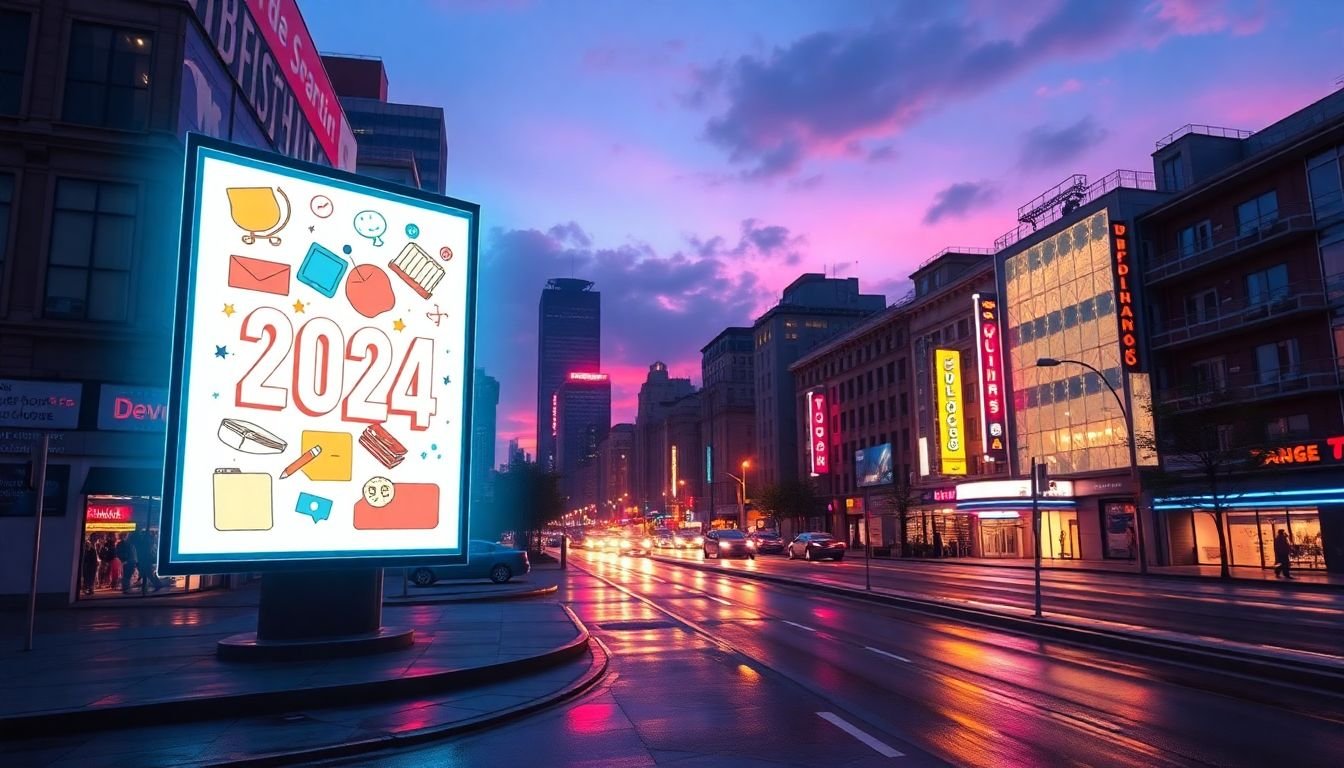
Table of Contents
In the ever-evolving landscape of visual communication, graphic design trends are not just aesthetic shifts, but powerful indicators of how we perceive, process, and interact with information. As we step into the future, the question on every designer’s mind is: what graphic design trends will shape the visual communication of 2024?
This article, ‘Graphic Design Trends 2024: 8 Styles That Will Dominate Visual Communication’, is your compass through the design horizon. We promise to unveil not just the trends, but the why and how behind them, empowering you to anticipate, adapt, and innovate. By the end of this piece, you’ll not only agree that these trends are set to dominate, but you’ll also gain practical insights to incorporate them into your design strategy.
But first, let’s take a step back. According to a report by Grand View Research, the global graphic design services market size was valued at USD 10.49 billion in 2020 and is expected to grow at a compound annual growth rate (CAGR) of 3.5% from 2021 to 2028. This exponential growth is fueled by the increasing demand for digital content and the need for businesses to stand out in the crowded online space. So, the question is, how can you ensure your designs are not just keeping pace, but leading the way?
In this article, we’ll explore eight graphic design trends that are set to dominate visual communication in 2024. From the resurgence of retro-futurism to the rise of AI-generated art, we’ll delve into the trends that are not just shaping the visual language of tomorrow, but also challenging our understanding of design itself. So, buckle up as we embark on this exciting journey into the future of graphic design.
Elevate Your Design Game with These Upcoming Visual Communication Trends
In the dynamic world of visual communication, trends are not just fleeting fads, but evolutionary steps that shape how we perceive and interact with information. As we step into the future, several exciting trends are poised to elevate your design game, making your visuals not only aesthetically pleasing but also more engaging and effective. One such trend is the rise of ‘Dark Mode’, which is not just about aesthetics, but also about reducing eye strain and promoting better user experience, especially in prolonged screen time. Another trend is the increasing use of ‘Interactive and Animated Elements’, which transform static designs into dynamic experiences, capturing users’ attention and enhancing their understanding of complex data. ‘Augmented Reality (AR)’ is also set to make waves, blurring the line between the physical and digital worlds, offering immersive experiences that can revolutionize how we communicate visually. ‘Sustainable Design’ is another trend gaining traction, with designers increasingly using eco-friendly materials and practices, reflecting a growing consciousness about our environmental impact. Lastly, ‘Personalization’ is becoming more sophisticated, with AI and machine learning enabling designs to adapt to individual users’ preferences and behaviors, creating a unique and tailored experience. Embracing these trends not only keeps your designs fresh and innovative but also ensures they resonate with today’s discerning audience.
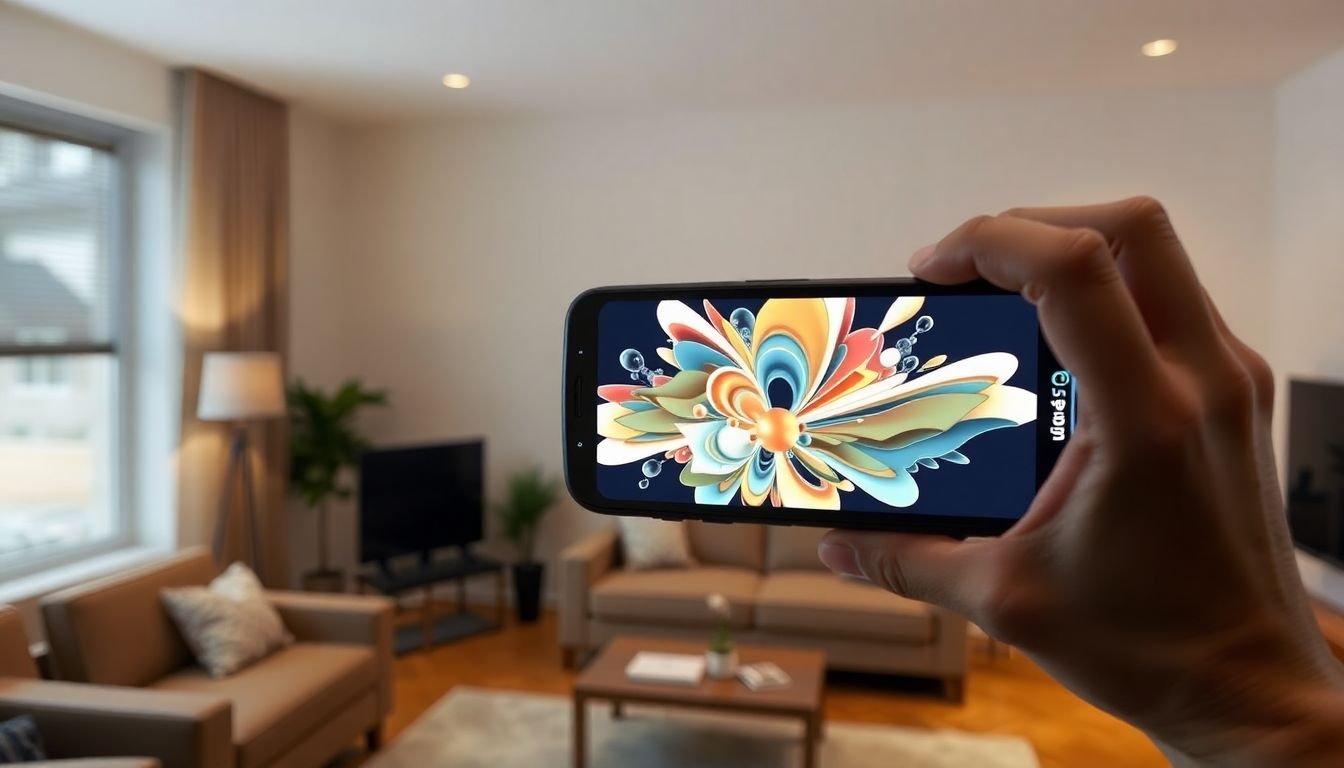
The Rise of Augmented Reality (AR)
The digital landscape is on the cusp of a revolution, and at the forefront of this transformation is Augmented Reality (AR). This technology, which overlays digital information onto the physical world, is poised to reshape graphic design, ushering in an era of interactive, immersive experiences that transcend the confines of traditional screens.
AR design principles are centered around the concept of ‘blending’
- harmoniously integrating digital elements into the real world. This involves understanding the environment, creating intuitive interactions, and ensuring the digital augmentation enhances, rather than detracts from, the user’s experience. Designers must also consider the unique constraints of AR, such as field of view, latency, and the need for quick, intuitive interactions.
To bring these designs to life, a plethora of tools are emerging. Unity, with its AR Foundation and AR Core/XR plugins, is a popular choice for creating AR experiences. Adobe’s AR tools, integrated into their Creative Cloud suite, allow designers to create AR content directly from their existing workflows. Meanwhile, platforms like 8th Wall and Zappar provide user-friendly, no-code solutions for AR creation.
Successful case studies abound, demonstrating the potential of AR in graphic design. Pepsi Max’s ‘AR Billboard’ campaign transformed mundane billboards into interactive, 3D experiences, increasing engagement and viral sharing. Similarly, IKEA’s ‘Place’ app allows users to visualize furniture in their own space, enhancing the shopping experience and reducing returns. In the art world, AR has enabled artists like Refik Anadol to create immersive, site-specific installations that blend digital and physical spaces.
As AR continues to evolve, so too will the tools and design principles that govern its use. The future promises a more interconnected, experiential world, where graphic design isn’t just seen, but experienced. So, buckle up, designers
- the AR revolution is here, and it’s ready to transform your world.
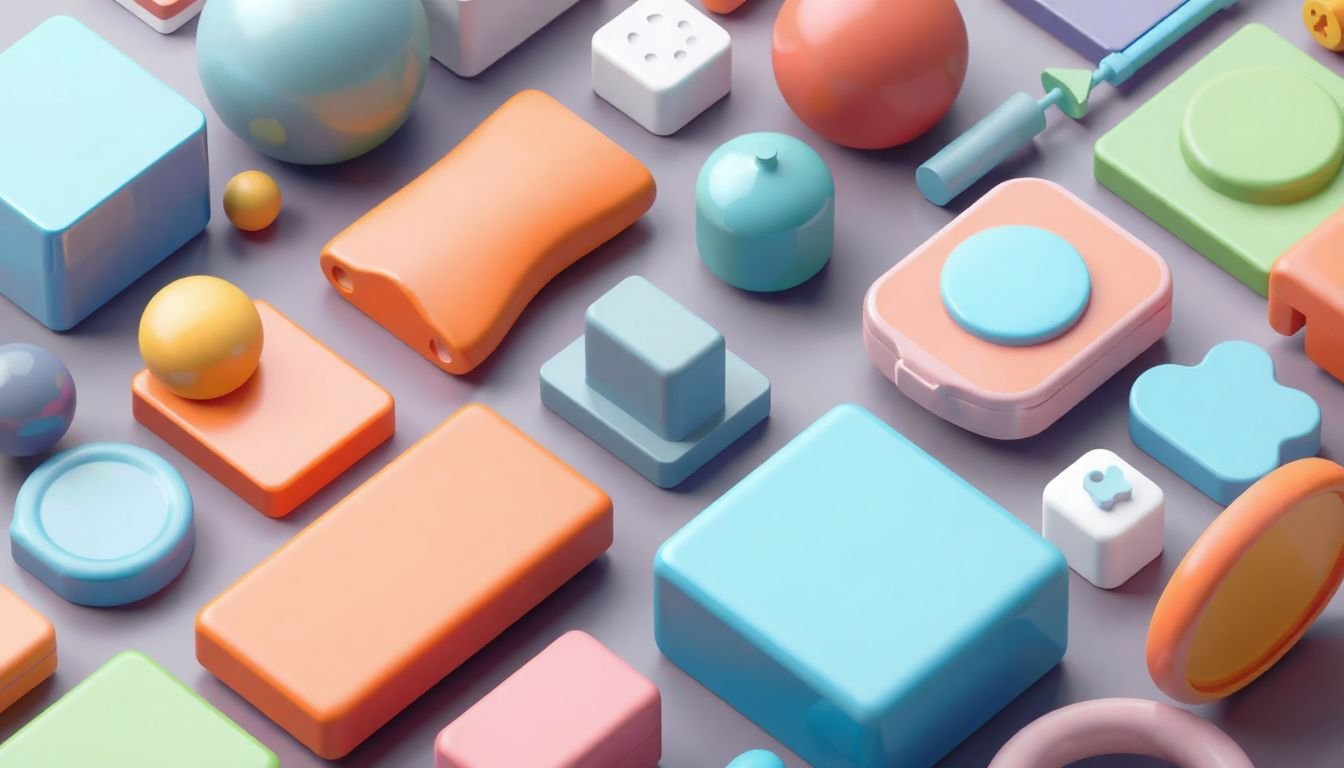
Embracing 3D and Isometric Design
In the ever-evolving landscape of design, we’re witnessing a resurgence of 3D and isometric design, fueled by remarkable advancements in software and hardware. This isn’t just a throwback to the ’90s, but a fresh wave of creativity that’s transforming the way we visualize and interact with digital content.
The applications of 3D and isometric design are vast and varied. From game development and architecture to data visualization and branding, these techniques allow us to create immersive, engaging, and often playful experiences. They enable us to break free from the constraints of flat design, adding depth, dimension, and a sense of space to our work.
At the heart of these designs lie a set of principles that guide creators. Firstly, understanding perspective is key. Isometric design, for instance, uses a 30-degree angle to create a sense of depth while maintaining a 1:1:1 ratio, making it perfect for infographics and icon design.
Secondly, lighting and shading play a crucial role in creating a sense of depth and realism. By manipulating these elements, designers can create striking visuals that draw the eye in.
Lastly, simplicity and clarity are essential. While 3D design offers endless possibilities, it’s important not to overwhelm the viewer with too much detail. A balance must be struck between complexity and readability.
Creating compelling 3D visuals involves a combination of art and science. It starts with sketching out ideas in 2D, then translating them into 3D using software like Blender, Cinema 4D, or even Adobe’s new Dimension tool. Experimenting with materials and textures can bring designs to life, while animating elements can add a dynamic, interactive element.
But perhaps the most exciting aspect of this resurgence is the democratization of 3D design. With user-friendly tools and powerful hardware becoming more accessible, the world of 3D is no longer the preserve of a select few. It’s an exciting time to be a designer, and the future looks… well, three-dimensional.
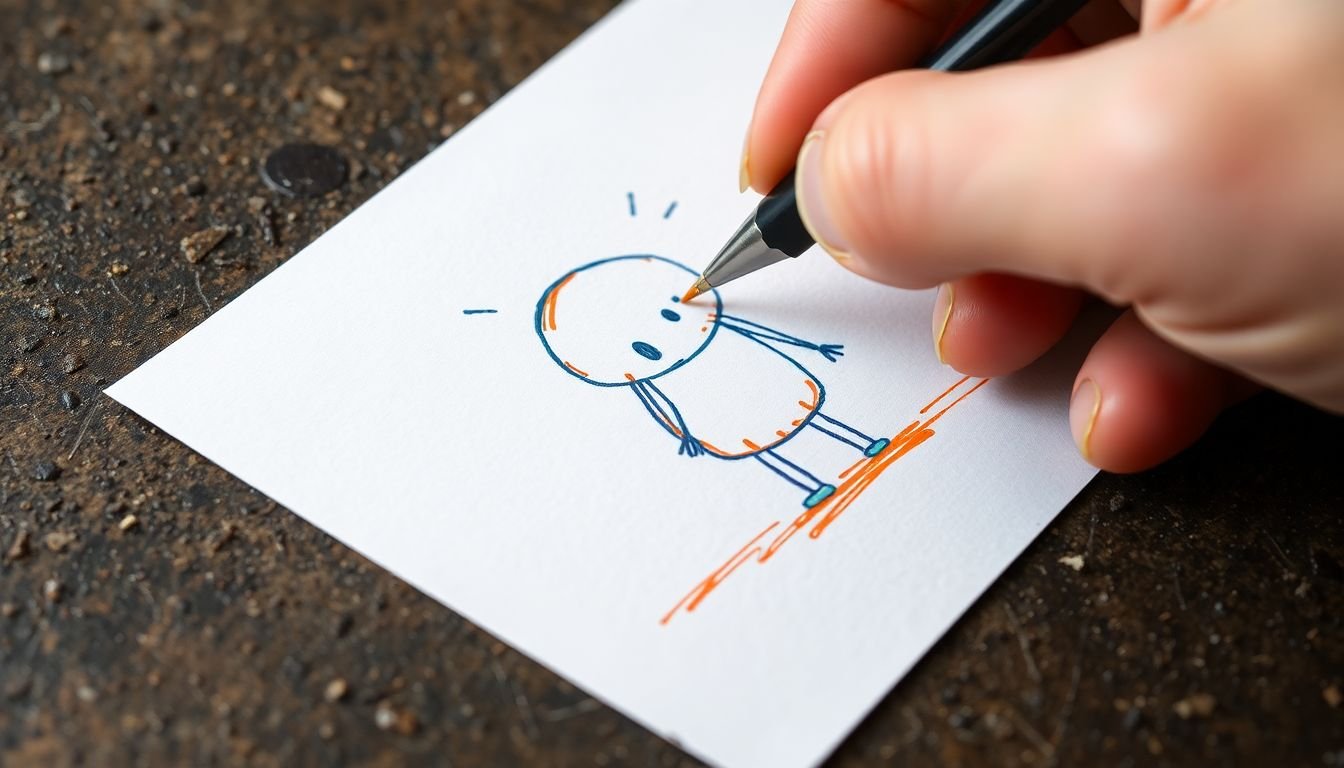
The Hand-Drawn and Imperfect Aesthetic
In the digital age, where perfection is often the norm, there’s a refreshing counter-movement gaining traction: the appreciation for hand-drawn, imperfect designs. This aesthetic, raw and authentic, evokes a human touch that’s increasingly valued in a world dominated by sleek, machine-made graphics.
At its core, this style is about embracing imperfections. It’s about the wobbly lines that reveal the artist’s hand, the smudges that hint at the process, and the variations that make each piece unique. The tools of the trade are as varied as the artists themselves, ranging from traditional pencils and paper to digital drawing tablets, each leaving its own mark on the final product.
In the realm of branding, this aesthetic is a breath of fresh air. It humanizes corporate identities, making them more approachable and relatable. Brands like Airbnb and Dropbox have incorporated hand-drawn elements into their logos, signaling a shift towards authenticity and storytelling.
Storytelling, indeed, is where this style truly shines. It’s not just about the final product, but the journey it took to get there. Each mark, each smudge, tells a story. It’s a narrative that resonates with audiences, connecting them on a deeper emotional level.
To create this style, consider the following steps:
- Start with a basic sketch, allowing lines to flow naturally.
- Embrace imperfections; don’t strive for perfection.
- Use a variety of tools to create texture and depth.
- Tell a story with your marks, letting your process show.
In essence, the hand-drawn, imperfect aesthetic is more than just a style; it’s a philosophy. It’s about celebrating the human touch, the process, and the story behind every mark.

Sustainable Design and Eco-Consciousness
In the dynamic world of graphic design, a quiet revolution is underway, one that’s as much about saving the planet as it is about creating compelling visuals. This shift towards sustainability is evident in the materials designers choose, the principles they adhere to, and the messages they convey.
At the heart of this movement lies a commitment to eco-friendly materials. Gone are the days when designers would blindly opt for virgin paper stocks. Today, they’re increasingly turning to recycled, FSC-certified, or even stone paper, which is made from calcium carbonate and resin, making it completely recyclable and biodegradable.
But the eco-consciousness of graphic designers isn’t just skin deep. It permeates their design principles as well. Minimalism, for instance, isn’t just a trend; it’s a philosophy that’s deeply rooted in sustainability. Designers are embracing simplicity, reducing waste, and maximizing impact. They’re using typography more effectively, minimizing ink coverage, and opting for smaller, more efficient file sizes.
Moreover, designers are also using their skills to raise awareness about environmental issues. Through powerful visual storytelling, they’re communicating complex environmental concepts in engaging, accessible ways. They’re designing campaigns for climate action, creating infographics that explain environmental phenomena, and even using their skills to advocate for policy change.
This shift towards sustainability isn’t just about doing the right thing; it’s also about good business. Clients are increasingly seeking out eco-conscious designers, and consumers are rewarding brands that demonstrate a commitment to the environment. In this way, sustainability isn’t just a trend; it’s a win-win. It’s a way for designers to do what they love while also making the world a better place.
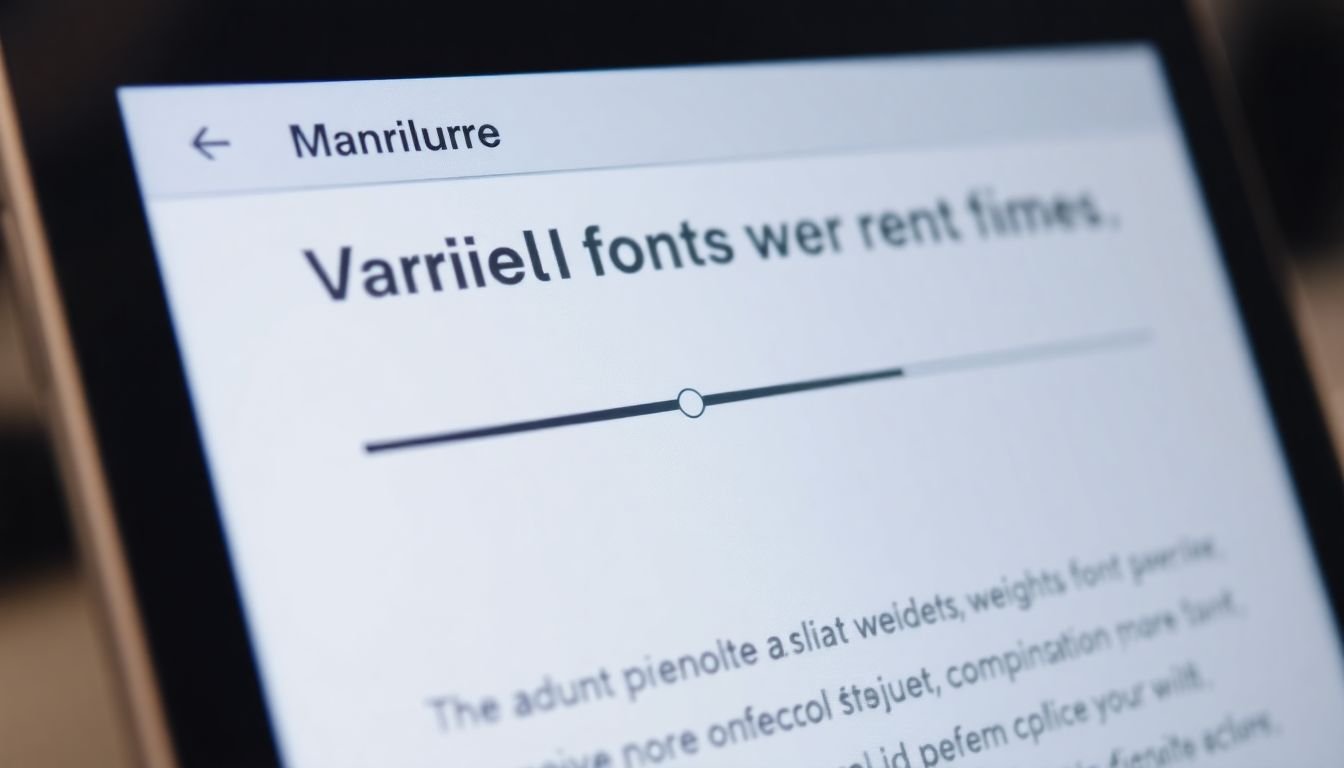
The New Wave of Typography: Variable Fonts
In the ever-evolving landscape of typography, a new wave is cresting, one that promises unparalleled flexibility and creativity: the rise of variable fonts. These digital fonts, unlike their static counterparts, offer a spectrum of styles within a single file, from thin to thick, condensed to expanded, and everything in between. The journey of variable fonts began with the development of the OpenType font format, which laid the groundwork for this typographic revolution.
The benefits of variable fonts are manifold. They reduce file sizes, as a single font can replace multiple static ones, leading to faster loading times and improved performance, particularly in web design. They also offer designers unprecedented control, allowing for fine-tuning of typefaces to match the exact needs of a project. Moreover, variable fonts open up a world of creative possibilities, enabling designers to create fluid, dynamic typography that responds to user interactions or adapts to different screen sizes.
But with great power comes great responsibility. To harness the full potential of variable fonts, designers must understand their axes
- the parameters that define the font’s variations. These could include weight, width, slant, or more complex optical size adjustments. Understanding these axes is key to making informed decisions about how to use variable fonts effectively.
Here are some best practices to consider when using variable fonts:
- Start with a clear understanding of the font’s axes and their ranges.
- Use the axes to create distinct styles, rather than subtle variations, to maintain legibility.
- Consider the context: variable fonts can be particularly useful in responsive design, where they can adapt to different screen sizes or user interactions.
- Test, test, test. Variable fonts offer a wealth of possibilities, but they also require careful testing to ensure they work as intended across different platforms and devices.
The new wave of typography is here, and it’s variable. By embracing this technology, designers can push the boundaries of typography, creating dynamic, responsive, and innovative designs that were previously unimaginable.
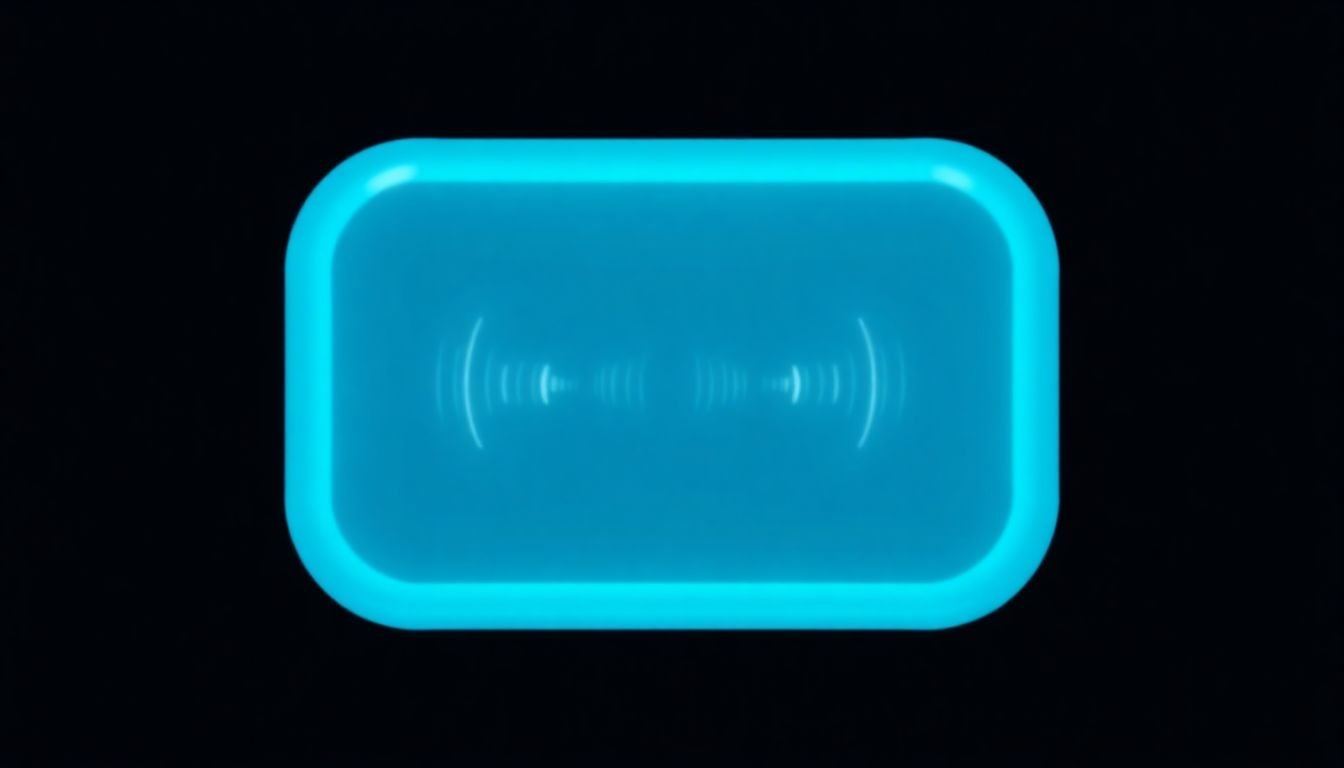
Motion Graphics and Micro-interactions
In the dynamic realm of digital design, motion graphics and micro-interactions have emerged as powerful tools to create engaging, responsive user experiences. These elements, when artfully integrated, can transform static interfaces into lively, intuitive platforms that captivate users and enhance functionality.
Motion graphics, the marriage of graphic design and animation, breathe life into static visuals. They guide users through interfaces, draw attention to key elements, and create a sense of dynamism. Design principles such as timing, easing, and sequencing are crucial here. Timing dictates the pace of animation, easing controls the acceleration and deceleration, while sequencing arranges the order of events. Mastering these principles allows designers to create animations that are not only visually appealing but also serve a purpose.
Micro-interactions, on the other hand, are small, single-use animations that provide immediate feedback to user actions. They are the unsung heroes of user experience, making interfaces feel responsive and interactive. A simple ‘like’ button that changes color when clicked, or a spinner that rotates while data loads, are examples of micro-interactions. They follow a four-step process: trigger (the user action), rules (the system’s response), feedback (the user’s notification), and loops and modes (the system’s state changes).
Tools like Adobe After Effects, Animate, and InVision Studio are instrumental in creating motion graphics and micro-interactions. They offer a range of features, from keyframe animation to interactive prototyping, enabling designers to bring their visions to life. However, the role of animation in graphic design extends beyond these tools. It’s about understanding the narrative you want to tell, the emotion you want to evoke, and the functionality you want to enhance. It’s about using motion as a language to communicate with users, making their journey through your interface engaging, intuitive, and enjoyable.
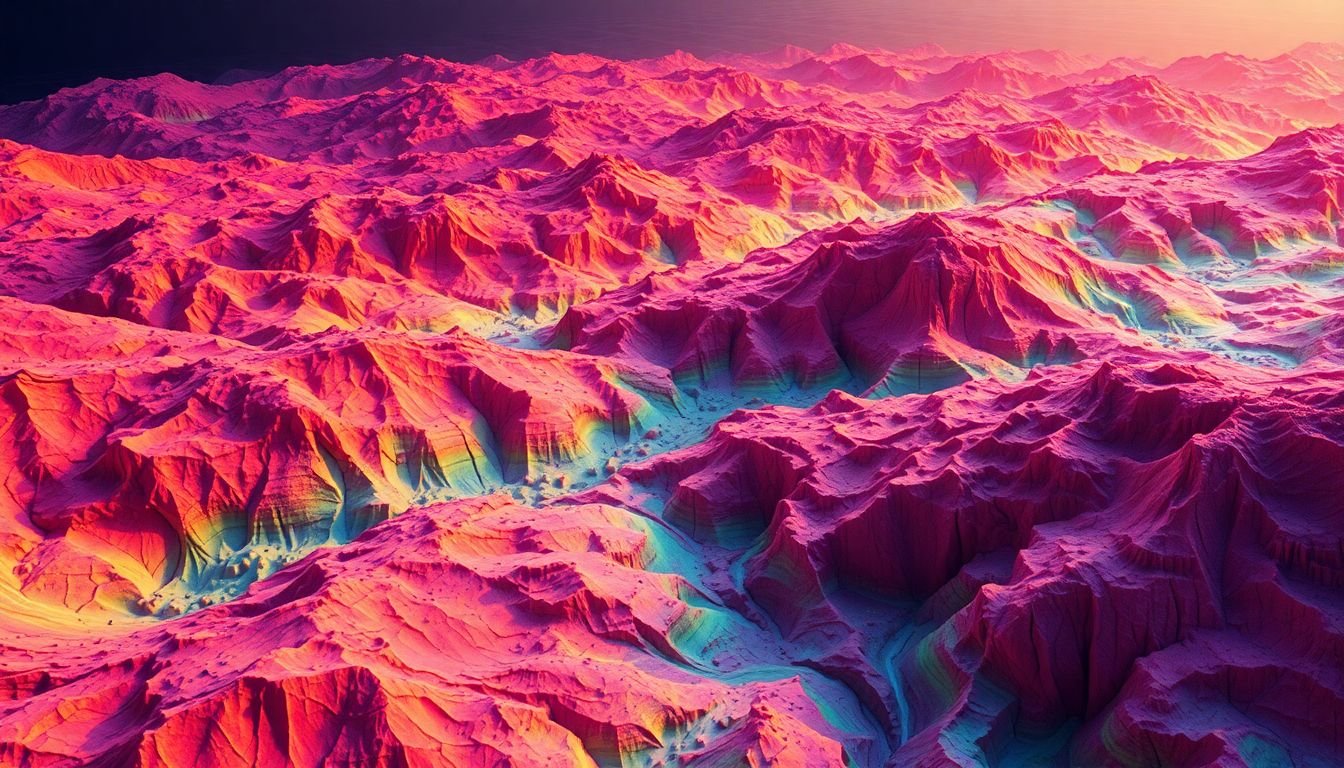
The Fusion of Art and Technology
In the dynamic realm of graphic design, the fusion of art and technology has given rise to a new era of creativity, where emerging technologies like AI and machine learning are reshaping visual landscapes. Graphic designers, once bound by the limitations of manual tools, now wield an array of digital instruments that promise unparalleled versatility and innovation.
The integration of AI and machine learning into graphic design is not merely about streamlining processes; it’s about unlocking new creative territories. AI algorithms can generate unique patterns, colors, and even entire compositions based on given parameters, offering designers a fresh palette of possibilities. For instance, Google’s DeepDream uses neural networks to create surreal, dreamlike images, while the DeepArt.io platform allows users to transform their photos into artistic masterpieces using AI.
However, this fusion also presents intriguing ethical implications. One key concern is originality. As AI begins to mimic and even surpass human creativity, questions arise about the authenticity of AI-generated art. Who is the true artist
- the designer who sets the parameters, or the AI that creates the final piece? Moreover, there’s the issue of accessibility and inclusivity. While AI can democratize design by making tools more accessible, it could also exacerbate digital divides, with those lacking access to advanced technology left behind.
Despite these challenges, the creative potential of AI in graphic design is undeniable. It offers designers new ways to explore their craft, pushing the boundaries of what’s possible. As we navigate this brave new world, it’s crucial to engage in open dialogue about the ethical implications, ensuring that this fusion of art and technology serves to enrich, not replace, human creativity.
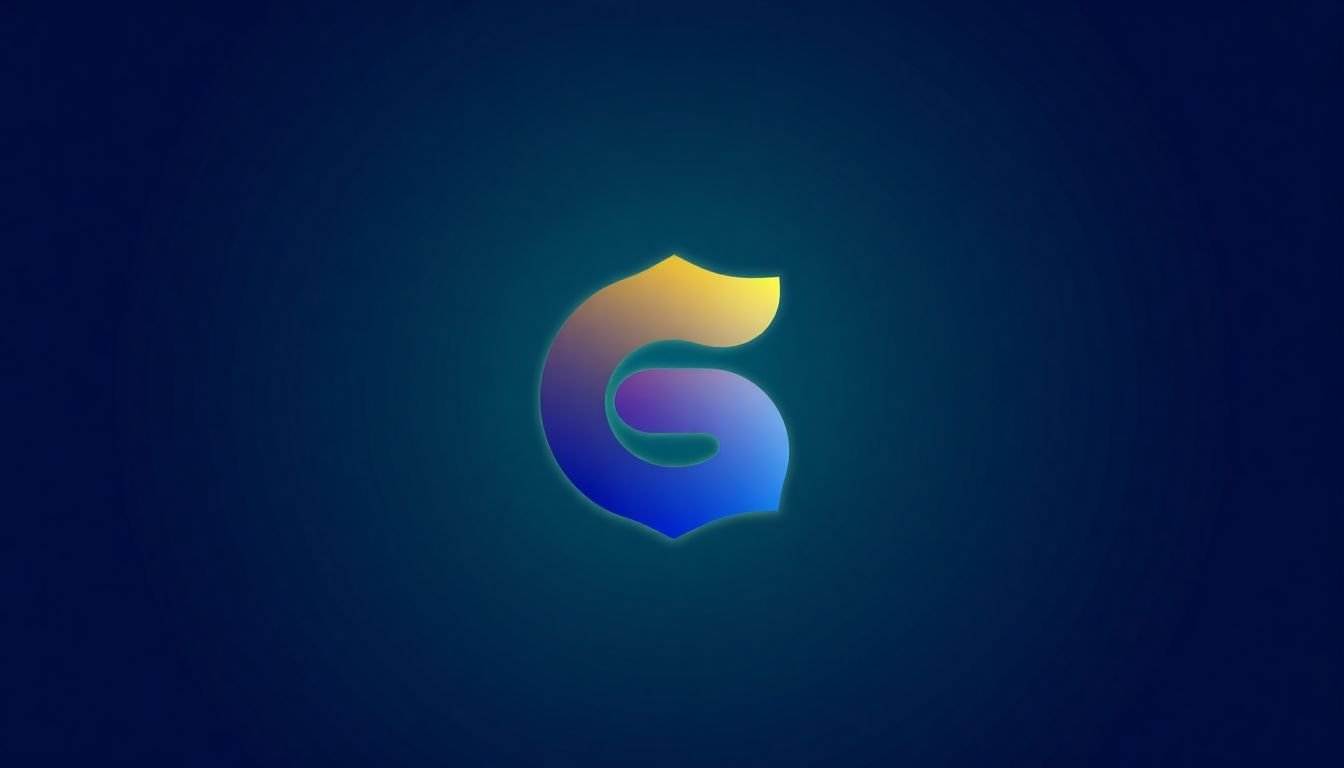
The Future of Branding: Personalization and Adaptability
In the dynamic landscape of today’s digital age, the future of branding is not just about creating a logo or a catchy tagline, but about crafting a living, breathing entity that can adapt and evolve with its audience. The modern consumer is no longer satisfied with one-size-fits-all marketing strategies. They crave personalization, authenticity, and relevance. This shift has led to a revolution in branding, where brands are transforming into dynamic, adaptive design systems that can cater to diverse audiences and platforms.
The evolution of branding can be seen in several steps. Firstly, brands are moving away from static logos and color schemes towards flexible design systems. These systems allow for a wide range of expressions, ensuring that the brand remains consistent yet adaptable across various touchpoints. For instance, Airbnb’s design system, ‘The Airbnb Design Language System’, allows for a vast array of customization while maintaining a cohesive brand identity.
Secondly, data is playing an increasingly significant role in shaping brand experiences. Brands are leveraging consumer data to create personalized experiences. Netflix’s personalized homepage, with its tailored movie and show recommendations, is a testament to this. By understanding individual consumer preferences, brands can create a deeper connection, fostering loyalty and engagement.
Lastly, brands are becoming more agile, responding swiftly to cultural shifts and trends. This adaptability is not just about staying relevant, but also about demonstrating a brand’s values and humanity. For example, Oreo’s ‘You Can Still Dunk in the Dark’ campaign during a Super Bowl blackout showcased the brand’s ability to think on its feet and engage with consumers in a meaningful way.
In conclusion, the future of branding lies in its ability to personalize and adapt. It’s about creating a brand that can evolve with its audience, that can speak to each individual consumer in a language they understand, and that can respond to the world around it with agility and authenticity.
FAQ
What are the graphic design trends expected to dominate visual communication in 2024?
What is the role of augmented reality (AR) in graphic design trends of 2024?
How will the ‘Dark Mode’ trend influence graphic design in 2024?
What is the ‘Glitch Art’ trend, and how will it impact graphic design in 2024?
How will the ‘Sustainable Design’ trend influence graphic design in 2024?
What is the ‘Custom Illustrations’ trend, and how will it shape graphic design in 2024?
How will the ‘3D Design’ trend influence graphic design in 2024?
What is the ‘Minimalism’ trend, and how will it impact graphic design in 2024?
How will the ‘Personalization’ trend shape graphic design in 2024?
- For instance, Netflix’s personalized movie recommendations are a prime example of this trend in action.
- In graphic design, this could translate to dynamic typography, color schemes, or imagery that adapt to user preferences.